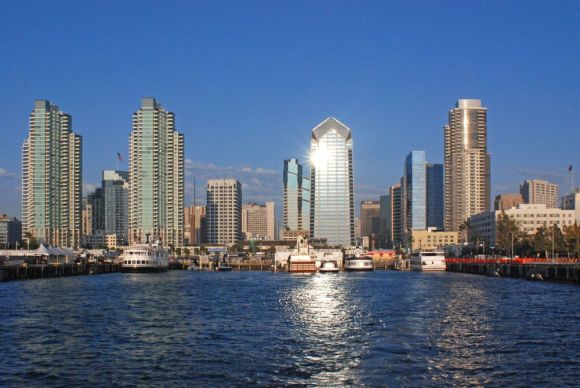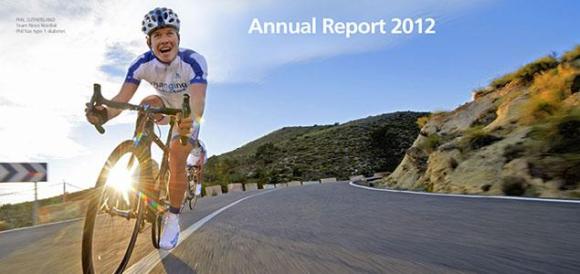Inspired by the Earth 911 email sent today, I have progressed further down the path of paper freedom! This is very exciting because our household tends to get overwhelmed with unnecessary paper mailing that just pile up and become one more item on the cleaning to do list. There were six different ways to reduce paper mailing but three in particular that I found to be useful and not as common as the others.
The first had to do with being removed from the phonebook delivery list. The process was very simple and all-encompassing as it gave the option to be removed from all paper phonebooks that your address is eligible to receive. Simply go to the National Yellow Pages site to select the directories you would like to receive or opt-out of all possible options like I did. To be honest, I’m surprised that these paper directories are hanging on with the ever-so-handy internet at our fingertips.
The next, and my favorite junk mail reducer, was to opt-out of the Consumer Credit Reporting offers. This site has the options to be removed from the preapproved offers for either five years or indefinitely. Guess which one I chose! As an added bonus, I was able to remove my husband from their list as well to double our impact.
Finally, I removed both me and my husband from the direct mail list for catalogs and other mail offers through the online tool provided by the Direct Marketing Association. Their home page provides the opportunity to be removed from direct paper mail as well as email offers. This site was a little more complex but seems to have a substantial amount of potential for reducing paper mailings.
Prior to this concise guide from Earth 911, I found these request to be quite complicated. So thanks for mailing the process clear and easy to understand. I’d love to hear if anyone else knows of other ways to reduce the clutter!
What do you think of Chipotle’s interpretation of factory farming and the solution they present? This doesn’t seem to be a branding campaign for the chain as their product is only briefly introduced at the end of the video.
How to avoid letting Chipotle’s depressing new ad brainwash you | Grist.
London Fashion Week highlighted a few ethical brands that are paving the way through a broken apparel and textile system. The fact is that a majority of fashion companies don’t monitor their individual supply chains to ensure that there is minimum impact on the environment, toxic chemicals are not being used, and human rights are not being abused. Many times, the fashion company may sign a contract with one factory that then subcontracts the work to an unauthorized factory to fulfill the order unbeknownst to the fashion company. Thankfully, there are a few retailers out there that are no longer willing to participate in this unethical treatment of people or the planet. Join me in being a responsible consumer and show the support of our dollars (or votes) to the groundbreaking companies that are changing the face of fashion one consumer at a time.
Building Momentum for Sustainability in Fashion – Green Living – The Ecologist.
This is a great quote that can be applied to many of the lessons we learn in this crazy life. Making choices to live in a way that’s environmentally sustainable can be challenging sometimes and that may get discouraging. When it seems like all of the news related to the environment is negative and it would just be easier to give up just keep your eyes open for the benefits that come from this journey on the road that sometimes seems to be less traveled and be encouraged to stick to it. Its never too late.
Never too old, never too bad, never too late, never too sick to scratch once again. – Bikram Choudhury
With the arrival of the Royal Baby – now known as Prince George Alexander Louis of Cambridge, I’ve been thinking quite a bit about the resources going into tracking the activity of the Royal Family and what it must take for them to maintain their level of lifestyle. While the rest of the world is consumed and entertained by the celebrities in the royal family I’m wondering things like:
- Does the Royal Family consider their impact on the planet?
- How much energy must it take to run the Royal Household?
- Do they really need a new designer or custom outfit for each appearance? What happens to the clothes after the general one-time wear?
- What does the Family do for the community? And, why is the community voluntarily elevating the idea of a royal class?
It may be weird that my thoughts are drawn to the level of consumerism that surrounds an event like the birth of the Royal Baby but I’ve learned to embrace my weird side. To satisfy my curiosity, I began to investigate efforts made by the Royal Family to be environmentally conscious and found that they have a section on their official website dedicated to such concerns. It turns out that The Royal Household has a variety of green efforts implemented on their properties.
To begin with, they installed a 150 metre deep bore hole at Buckingham Palace to help combat the local risk of severe flooding and have utilized the bore hole as a resource to air conditioning and potable water. To generate clean energy, a small 1MW scale hydro-electric generator located on the Balmoral Estate contributes power to the National Grid and additional hydro-electric plants are being installed at Romney Weir with the expectation that they will be connected to the Castle by year-end. Furthermore, energy saving audits are performed at Buckingham Palace every 5 years to identify areas where improvement can be made since there are approximately 600 residents in addition to the many events that are hosted there each year. Finally, the Queen’s gardens are maintained with ecological methods in that the plants are native, habitats are left to decompose naturally and honey bee hives have been positioned in the middle of the gardens.
It pleases me to know that they are even the slightest bit conscious of their own environmental impact and are implementing sustainable solutions. However, I challenge the Royal Household to release a public sustainability report for their domestic and business impact on the environment. That would be cause for celebration!
What an exciting Stanley Cup Series – congratulations to the Chicago Blackhawks for pulling off a dramatic win in game 6! You may find it interesting, as I did, that the Blackhawks have their very own sustainability mission in the Chicago community. Earlier in the season, they partnered with Constellation Power in the promotion of energy efficiency. They did this by hosting a Go-Green game that avoided 63 metric tons of carbon dioxide emissions (CO2) or 143 barrels of oil by purchasing Green-e Energy Renewable Energy Credits. This sponsorship was an opportunity to educate fans about their option to choose renewable electricity providers for their homes.
The five-time Stanley Cup winners have also partnered with the Chicago Gateway Green initiative as leaders in the community for responsible development that aims to leave the environment in a better condition for future generations. The initiative educates through beautification projects that execute sustainable landscaping, remove litter, and improve air and water quality in the Chicago area. Blackhawks Charities and the Team are bringing pride to the city of Chicago on the rink and through the collaboration of its sustainable partnerships.
For more information on the Chicago Blackhawks Charities, check out their community report here.
As a resident of the San Diego Coastal Community, I have a vested interest in the research being done on how climate change will impact the communities like mine. So I took a particular interest in the June 13th publication on the Take Part website that summarized the detailed report conducted by the Organization for Economic Cooperation and Development (OECD) on populations that have potential for being exposed to coastal flooding and other disastrous events. The top 15 vulnerable cities are reviewed on the Take Part website but the OECD report provides more information on 135 cities that are in exposed areas over the next 70 years, San Diego is currently listed as 109th in the ranking.
The top 15 include:
1. Mumbai, India:
Population at risk in 2005: 2.8 million
Estimated population at risk in 2070: 11.4 million
2. Guangzhou, China:
Population at risk in 2005: 2.7 million
Estimated population at risk in 2070: 10.3 million
3. Shanghai, China:
Population at risk in 2005: 2.4 million
Estimated population at risk in 2070: 5.5 million
4. Miami, FL:
Population at risk in 2005: 2.0 million
Estimated population at risk in 2070: 4.8 million
5. Ho Chi Minh City, Vietnam:
Population at risk in 2005: 1.9 million
Estimated population at risk in 2070: 9.2 million
6. Kolkata (Calcutta), India:
Population at risk in 2005: 1.9 million
Estimated population at risk in 2070: 14 million
7. New York City, Newark:
Population at risk in 2005: 1.5 million
Estimated population at risk in 2070: 2.9 million
8. Osala-Kobe, Japan:
Population at risk in 2005: 1.4 million
Estimated population at risk in 2070: 2.0 million
9. Alexandria, Egypt:
Population at risk in 2005: 1.3 million
Estimated population at risk in 2070: 4.4 million
10. New Orleans, LA:
Population at risk in 2005: 1.1 million
Estimated population at risk in 2070: 1.4 million
11. Tokyo, Japan:
Population at risk in 2005: 1.1 million
Estimated population at risk in 2070: 2.5 million
12. Tianjin, China:
Population at risk in 2005: 956,000
Estimated population at risk in 2070: 3.8 million
13. Bangkok, Thailand:
Population at risk in 2005: 907,000
Estimated population at risk in 2070: 5.1 million
14. Dhaka, Bangladesh:
Population at risk in 2005: 844,000
Estimated population at risk in 2070: 11.1 million
15. Amsterdam, Netherlands: Population at risk in 2005: 839,000
Estimated population at risk in 2070: 1.4 million
When I first saw the interview with Jonathan on The Colbert Report back in 2010, there was no way of knowing the impact this book would have on my world. It was enlightening to see that humans are so disconnected from our food sources. Many of us don’t see the connection between how our food is currently being produced and the damage it has on the environment and our well-being. When people ask about the food choices I make, they often follow it up with a quick “Nevermind, I don’t want to know. It’ll ruin meat for me.” That’s a HUGE problem and reason that this book is so important. It’s an honest approach that illustrates the immoral practices of factory farming, environmental destruction caused by the current system and physical harm to all parties involved.
Hey – If you like having no control over the fecal matter and other nasty by-products in your food, then there’s no reason to read this book. For the rest of us that do care, it is important to support local farmers in this battle against the giant conglomerates that are only concerned about the bottom line.
Check out Eating Animals by Jonathan Safran Foer’s as soon as possible.
Sustainability reporting is a great way for consumers to have a better understanding a company’s of the environmental, economic and social impact. When done right, which generally means that it is certified by a regulatory organization, this is an important tool that many companies can use to showcase their efforts to participate in global change.






![0511-0702-0211-2547_Businessman_Holding_a_Help_Sign_Up_Under_a_Pile_of_Papers_clipart_image[1]](https://sustainablee.files.wordpress.com/2013/10/0511-0702-0211-2547_businessman_holding_a_help_sign_up_under_a_pile_of_papers_clipart_image1.jpg?w=580)







